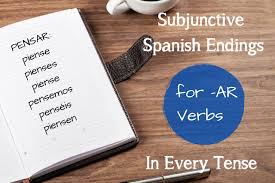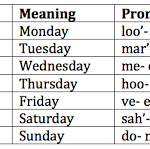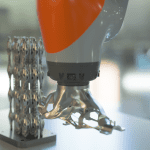Explore the Future Subjunctive! It expresses doubts or desires about the future. To form it, start with the infinitive verb. Remove -ar, -er, or -ir and add the specific endings. Practice with irregular verbs like ‘tener.’ Use it for uncertain events, hopes, and wishes. Improve your Spanish skills by mastering this essential tense. Ready to dig deeper into the nuances?
Origins and Evolution of Future Subjunctive
The evolution of the Future Subjunctive tense in Spanish began during the early stages of the language’s development. Back then, this tense served to express doubt, uncertainty, or desires about events that would occur in the future. As Spanish continued to develop, the Future Subjunctive underwent changes to become more streamlined and efficient in conveying these nuanced meanings.
Over time, the Future Subjunctive evolved to reflect the changing linguistic needs of Spanish speakers. It adapted to align more closely with the language’s overall structure and the ways in which speakers communicated their thoughts and intentions. This evolution allowed for greater precision and clarity in expressing future hypothetical situations or desires.
Through centuries of use and refinement, the Future Subjunctive in Spanish has become an essential aspect of the language’s grammar. Its evolution showcases how languages adapt to meet the evolving needs of their speakers while retaining their core functions and meanings.
Formation and Conjugation Rules
Exploring how to form and conjugate the Future Subjunctive in Spanish can enhance your understanding of this complex grammatical aspect. To form the Future Subjunctive, you typically start with the infinitive form of the verb. For -ar verbs, you’d remove the final -ar and add the following endings: -e, -es, -e, -emos, -éis, -en. For example, the verb ‘hablar’ would become ‘hablare, hablares, hablare, habláremos, hablareis, hablen’ in the Future Subjunctive.
Similarly, for -er and -ir verbs, you’d remove the final -er or -ir and add the endings: -a, -as, -a, -amos, -áis, -an. For instance, the verb ‘comer’ would transform into ‘comiere, comieres, comiere, comiéremos, comiereis, comieren’ in the Future Subjunctive. It’s crucial to pay attention to irregular verbs like ‘tener,’ which changes to ‘tuviere, tuvieres, tuviere, tuviéremos, tuviereis, tuvieren’ in the Future Subjunctive.
Mastering these formation and conjugation rules will greatly aid you in using the Future Subjunctive correctly in Spanish.
Usage in Hypothetical Scenarios
To apply the Future Subjunctive tense in Spanish to hypothetical scenarios, consider how the conjugation rules you’ve learned can help you construct accurate statements. When you want to express something that’s uncertain or hypothetical in the future, the Future Subjunctive is the perfect choice. For example, if you were to say, ‘Si tuvieras más tiempo, estudiarías más’ (If you’d more time, you’d study more), you’re using the Future Subjunctive ‘tuvieras’ to indicate a hypothetical situation. This tense allows you to talk about possibilities or events that may or may not happen in the future.
In hypothetical scenarios, the Future Subjunctive helps you convey your ideas with precision. Whether you’re discussing potential outcomes, dreams, or desires, this tense enables you to express them effectively. By mastering the conjugation of verbs in the Future Subjunctive, you can confidently navigate through various hypothetical situations in Spanish conversations. Keep practicing to enhance your skills and fluency in using the Future Subjunctive for hypothetical scenarios.
Expressing Hopes and Wishes
Consider how mastering the Future Subjunctive tense in Spanish can empower you to articulate your hopes and wishes with precision and fluency. When expressing hopes and wishes, the Future Subjunctive allows you to convey desires that may or may not come true. For example, ‘Espero que logres tus metas’ (I hope you achieve your goals) or ‘Quiero que tengas un excelente día’ (I want you to have a great day). These constructions show a sense of longing or desire that’s crucial in communication.
Using the Future Subjunctive for hopes and wishes adds a layer of politeness and respect to your speech. It demonstrates empathy and consideration for others’ feelings. When you say, ‘Ojalá que todo salga bien’ (I hope everything goes well), you’re expressing goodwill and positivity towards the other person’s situation. This can strengthen relationships and create a more harmonious interaction.
Mastering the Future Subjunctive for hopes and wishes enables you to connect with others on a deeper level. It shows that you care about their well-being and are invested in their happiness. So, practice using the Future Subjunctive to express your hopes and wishes effectively in Spanish conversations.
Practical Tips for Mastering Future Subjunctive
When expressing hopes and wishes in Spanish, honing your understanding of the Future Subjunctive can be enhanced through practical tips for mastering this tense effectively. To begin, familiarize yourself with the irregular verbs in the Future Subjunctive tense. While most verbs follow the regular conjugation patterns, certain common verbs like ‘tener,’ ‘venir,’ and ‘poner’ have unique conjugations that you should memorize.
Additionally, practice using the Future Subjunctive in context by creating sentences that express desires or hypothetical situations. By actively incorporating this tense into your speech and writing, you’ll become more comfortable with its usage over time. Moreover, pay attention to conjunctions that often introduce the Future Subjunctive, such as ‘cuando’ (when), ‘si’ (if), and ‘a menos que’ (unless). Understanding how these words signal the need for the Future Subjunctive will help you apply it correctly.
Lastly, expose yourself to native Spanish materials like books, movies, and songs to observe the Future Subjunctive in natural language settings. Immersing yourself in authentic content can improve your grasp of this complex tense and help you internalize its usage effortlessly.
Frequently Asked Questions
Can the Future Subjunctive Tense Be Used in Formal Writing and Academic Papers?
Yes, you can use the future subjunctive tense in formal writing and academic papers. It adds sophistication and precision to your language. Ensure proper usage and consult style guides for specific guidelines.
Are There Any Common Mistakes That Learners Often Make When Using the Future Subjunctive?
When using the future subjunctive, learners often make mistakes like confusing the forms or misplacing accents. Remember to practice regularly, seek feedback, and pay attention to details. With dedication, you’ll master this tense in no time.
How Does the Future Subjunctive Differ From the Present Subjunctive in Spanish Grammar?
In Spanish grammar, the future subjunctive differs from the present subjunctive by indicating actions that will happen in the future. It’s used for hypothetical situations and requires a specific verb conjugation. Mastering it will enhance your language skills.
Are There Any Regional Variations in the Use of the Future Subjunctive Across Spanish-Speaking Countries?
Across Spanish-speaking countries, regional variations exist in the use of the future subjunctive. You’ll notice differences in how it’s employed, reflecting the diverse linguistic landscapes. Understanding these nuances enhances your grasp of Spanish grammar.
Can the Future Subjunctive Be Used to Express Doubts or Uncertainties About Future Events?
Yes, the future subjunctive in Spanish can be used to express doubts or uncertainties about future events. It adds a layer of uncertainty to your statements, making them more nuanced and reflective of your mindset.
Conclusion
So there you have it! The future subjunctive tense in Spanish grammar may seem complex at first, but with practice and dedication, you can master it.
By understanding its origins, formation rules, and usage in hypothetical scenarios and expressing hopes and wishes, you can enhance your language skills.
Keep practicing and don’t be afraid to make mistakes – that’s all part of the learning process. ¡Buena suerte!


